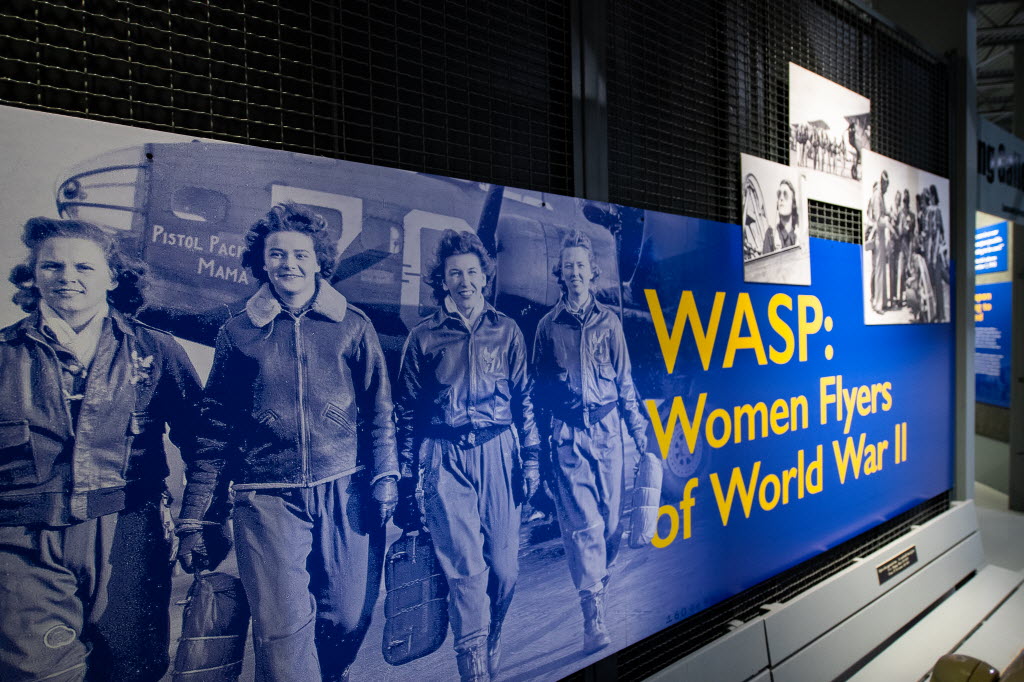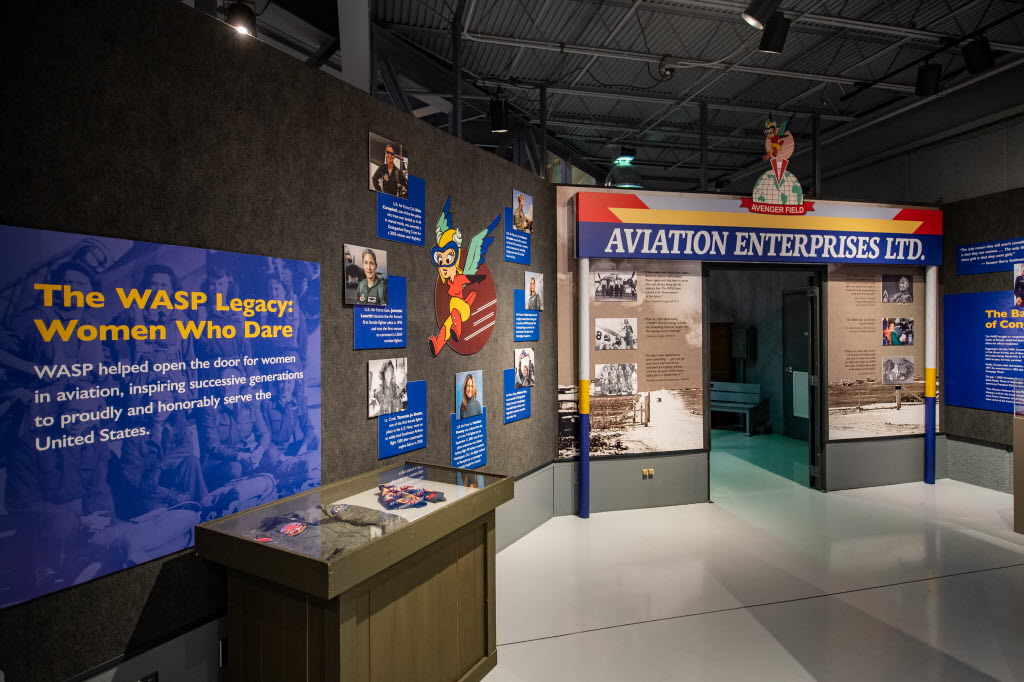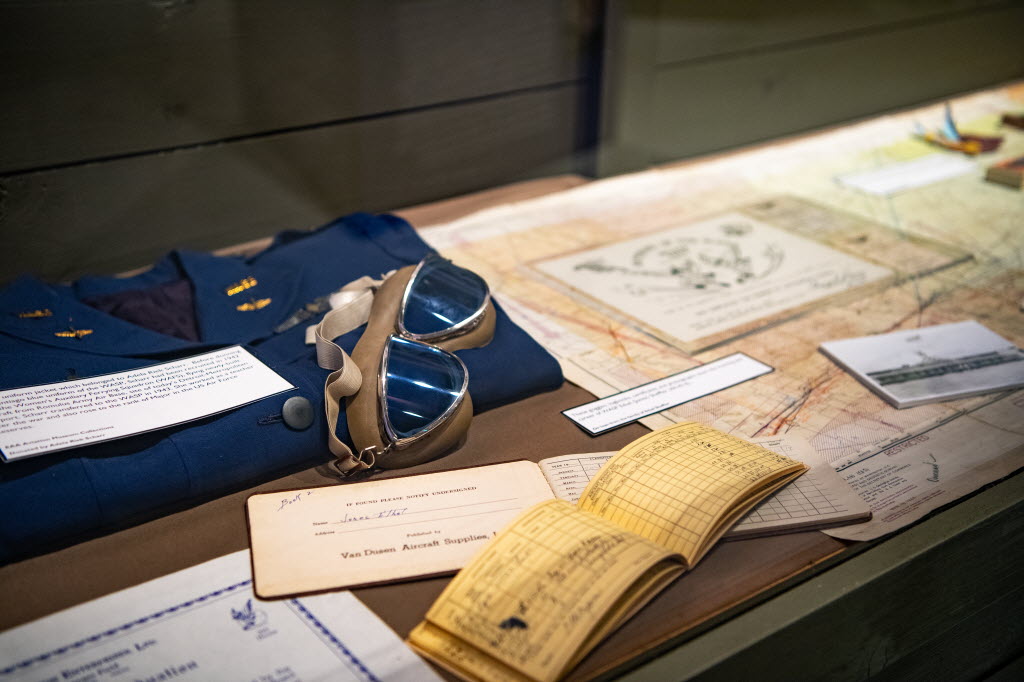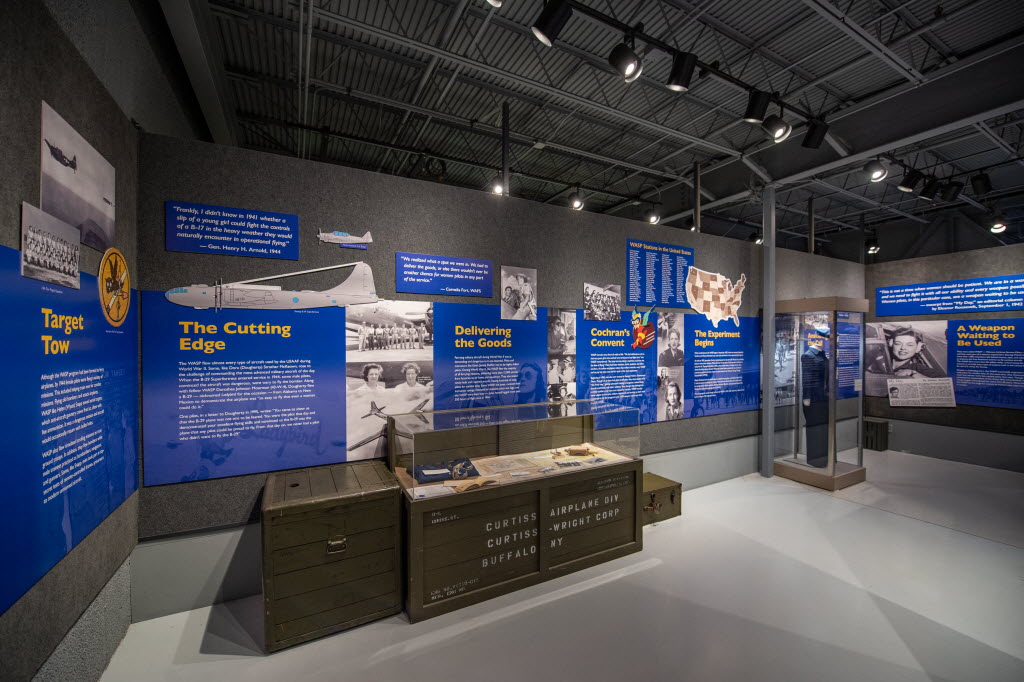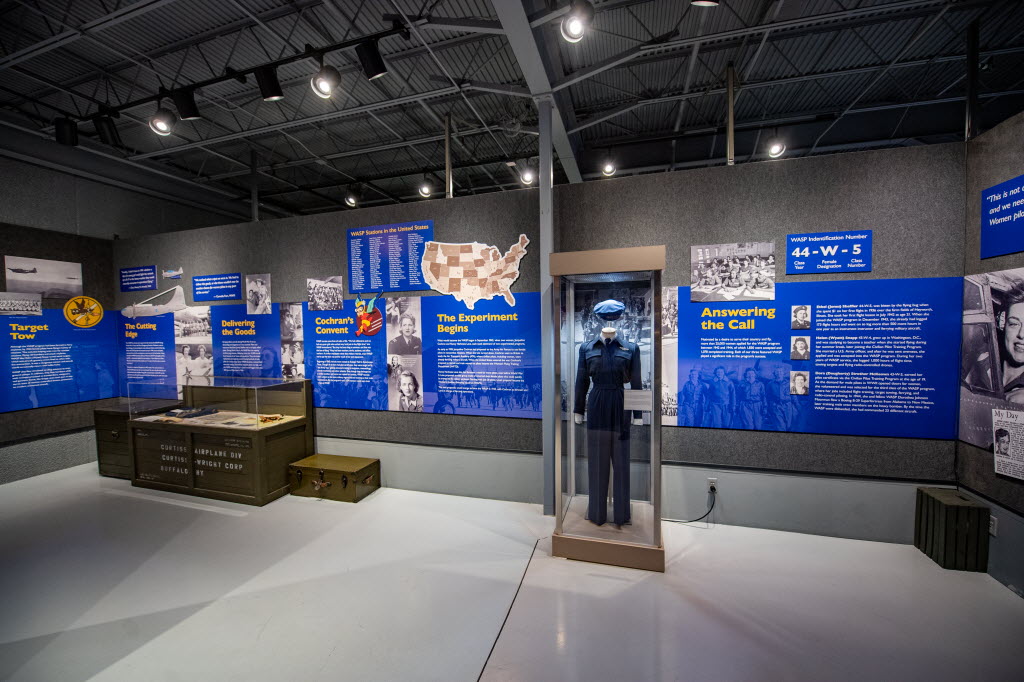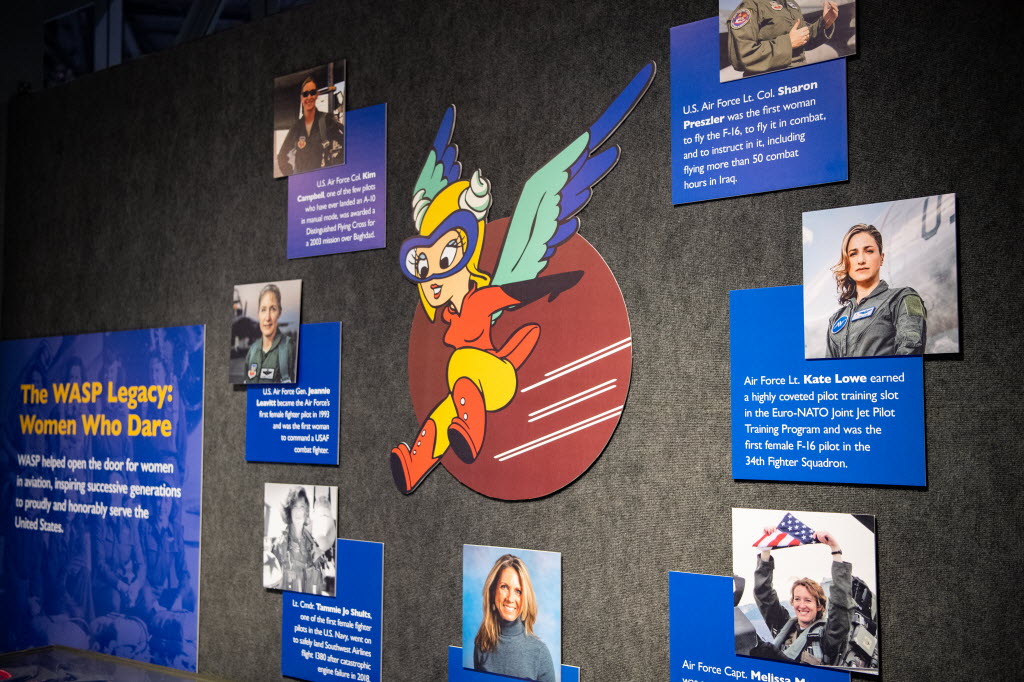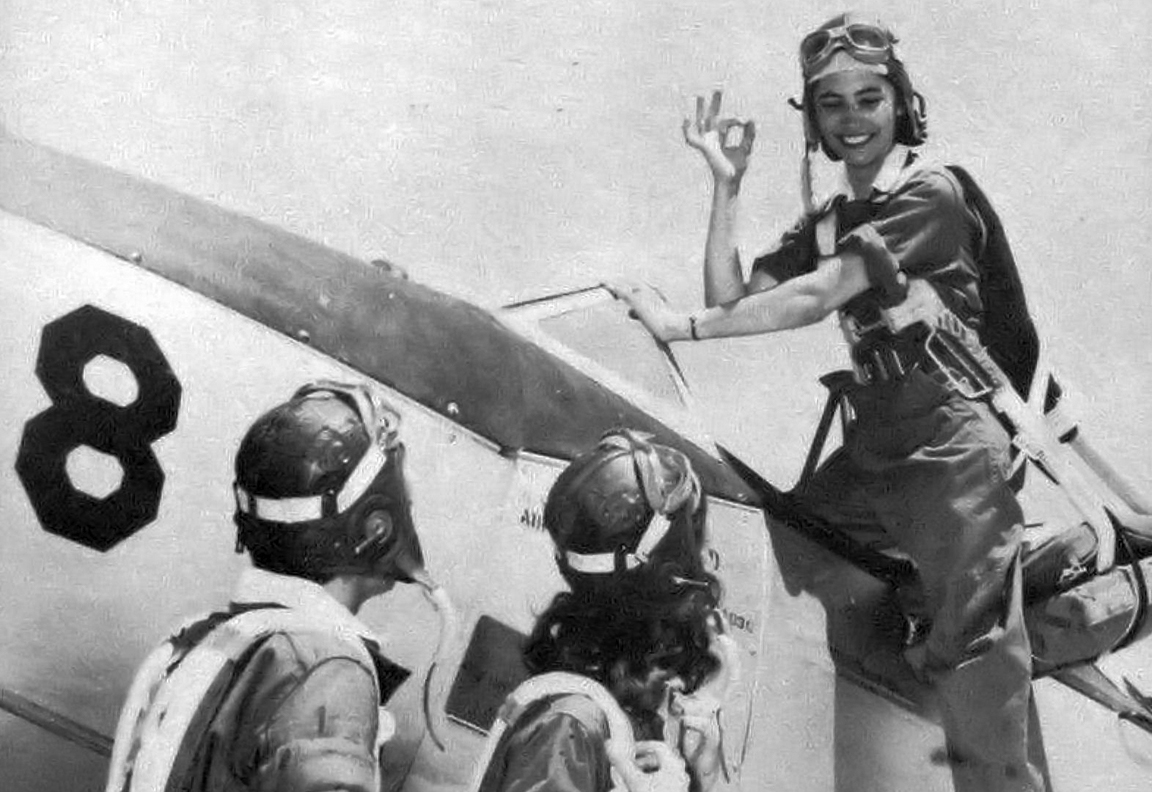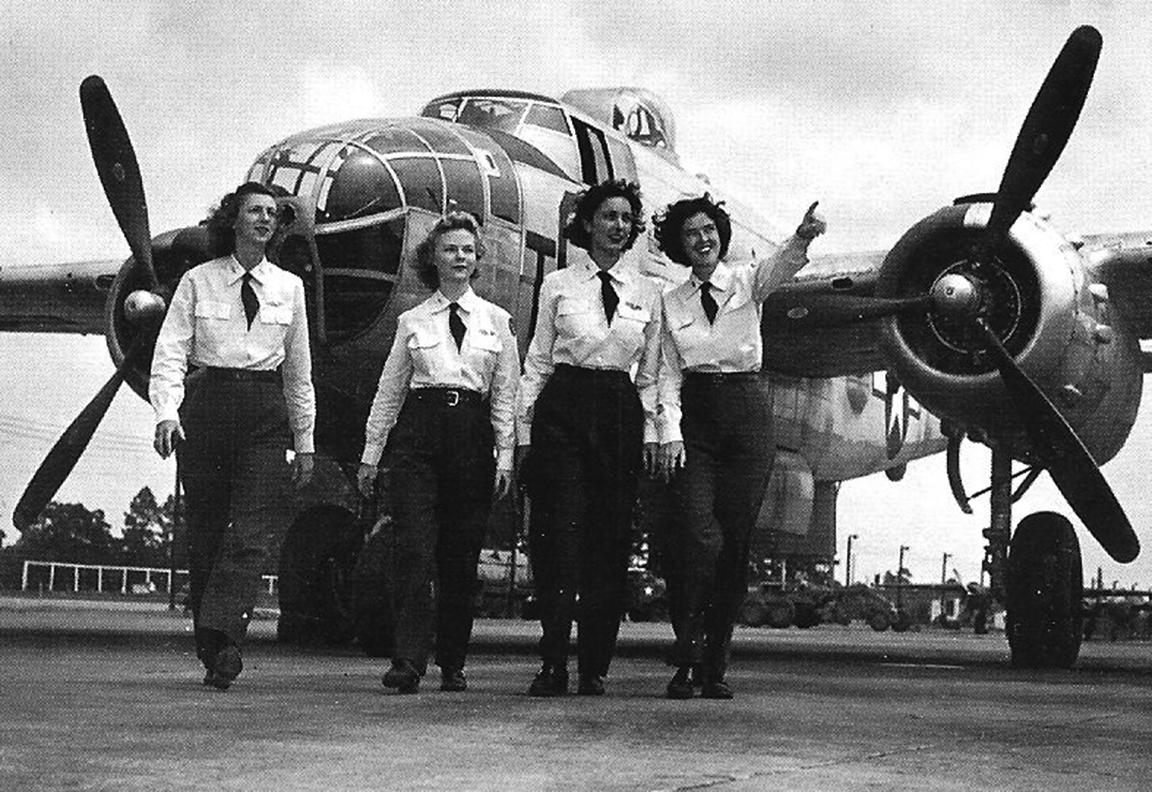They were called WASP — Women Airforce Service Pilots — and they were part of a historic experiment. During World War II, more than 1,000 volunteers left behind homes, jobs, and schooling to become the first American women to fly combat aircraft.
This new temporary exhibit in the Eagle Hangar's Telling Gallery highlights how these women served their country and overcame barriers through their love of flight.
- Learn about the dangers these brave women faced as they piloted bombers, towed aerial targets, and flew simulated strafing missions, and honor the 38 women who lost their lives over the course of the WASP program.
- View fascinating artifacts such as the Congressional Gold Medal awarded to the WASP in 2009, along with an impressive array of photos from the Texas Women's University archives and other collections.
- Read the personal stories of WASP who played a significant role in the program's success: Ethel (Jones) Sheffler, Helen (Wyatt) Snapp, and Dora (Dougherty) Strother McKeown, along with WASP founders Jacqueline Cochran and Nancy Harkness Love.
- Honor the persistence of Hazel (Ying Lee) Yim-Qun, Verneda (Rodríguez) McLean, and Ola Mildred Rexroat, who had to break through racial and cultural barriers as well as passing selection and training to become WASP.
- Learn how the WASP helped open doors for women in aviation today, such as Lt. Cmdr. Tammie Jo Shults (USN), Col. Kim Campbell (USAF), Gen. Jeannie Leavitt (USAF), and many other distinguished pilots.
